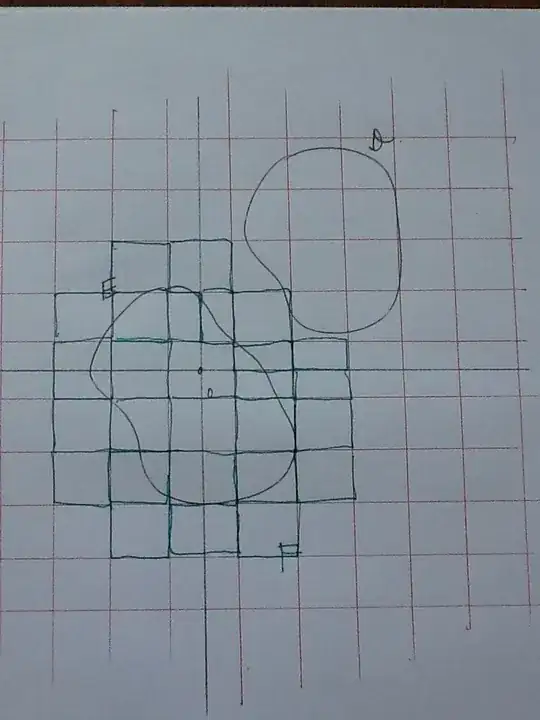I am having a very hard time with a problem from Gamelin's Complex Analysis.
Problem Statement and Hint: Show that if 0 and $\infty$ lie in different connected components of the complement $C^*\backslash D$ of $D$ in the extended complex plane, then there is a closed path $\gamma$ in $D$ such that $\int_{\gamma}d\theta\ne 0$. Hint. The hypothesis means that there are $\delta>0$ and a bounded subset $E$ of $C\backslash D$ such that $0\in E$, and every point of $E$ has distance at least $5\delta$ from every point of $C\backslash D$ not in $E$. Lay down a grid of squares in the plane with side length $\delta$ and let $F$ be the union of the closed squares in the grid that meet $E$ or that border on a square meeting $E$. Show that $\partial F$ is a finite union of a closed paths in $D$, and that $\int_{\partial f}d\theta=2\pi$
I've found a suggested proof online that says "Note by construction, $\partial F\subset D$. I've attached a picture which shows my grid of squares, set $D$ and set $E$ containing 0. I've outlined in green all of the squares that meet $E$ or that border on a square meeting $E$ (I think). The union of these closed squares in the grid is called F.

My first question is, how is $\partial F$, the border of $F$, contained in $D$?